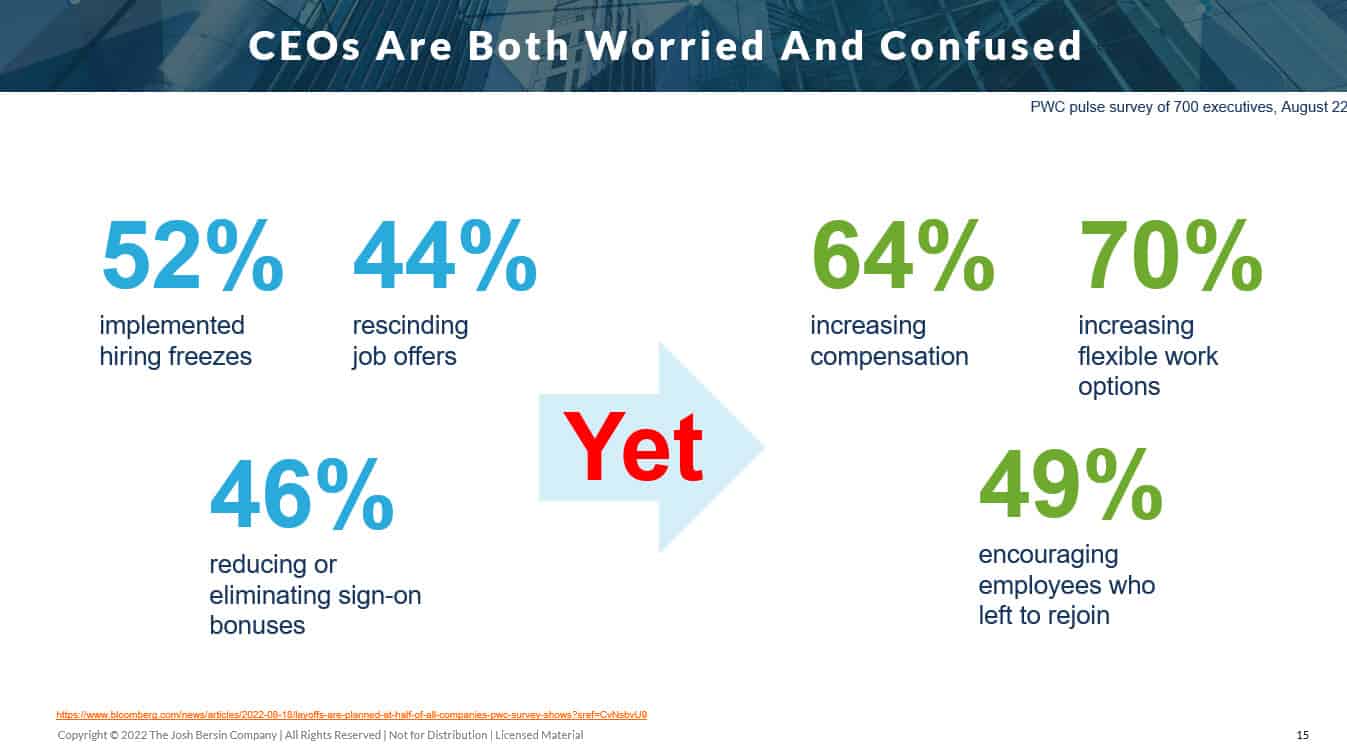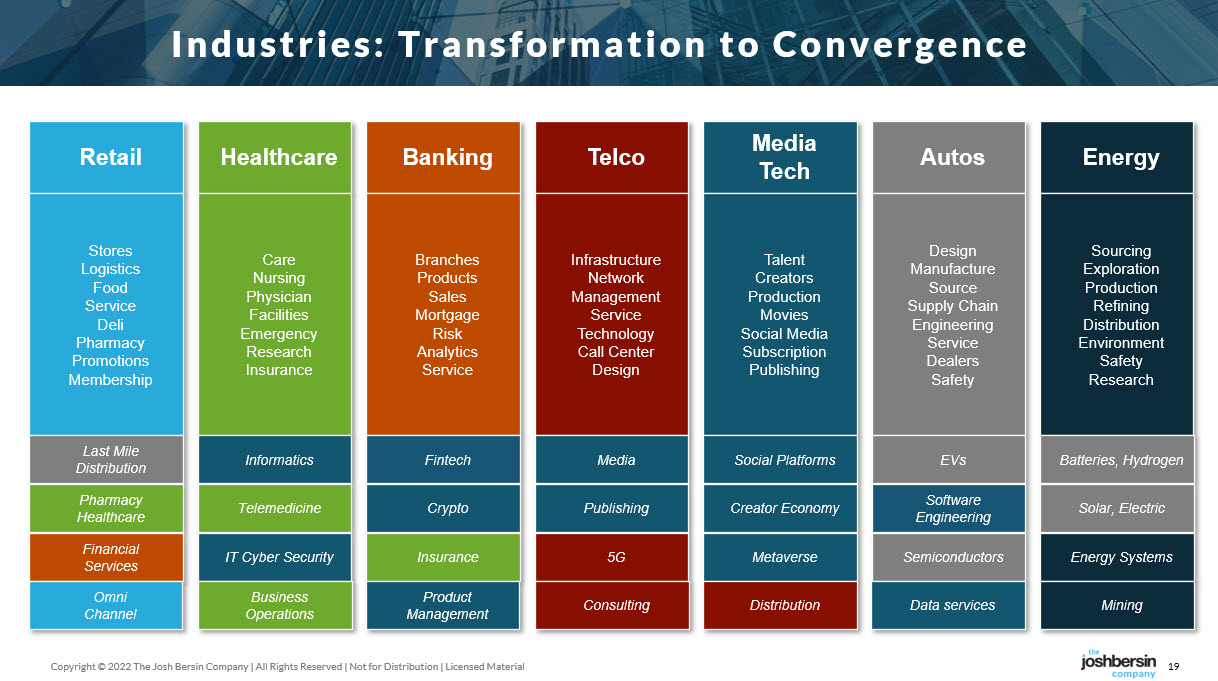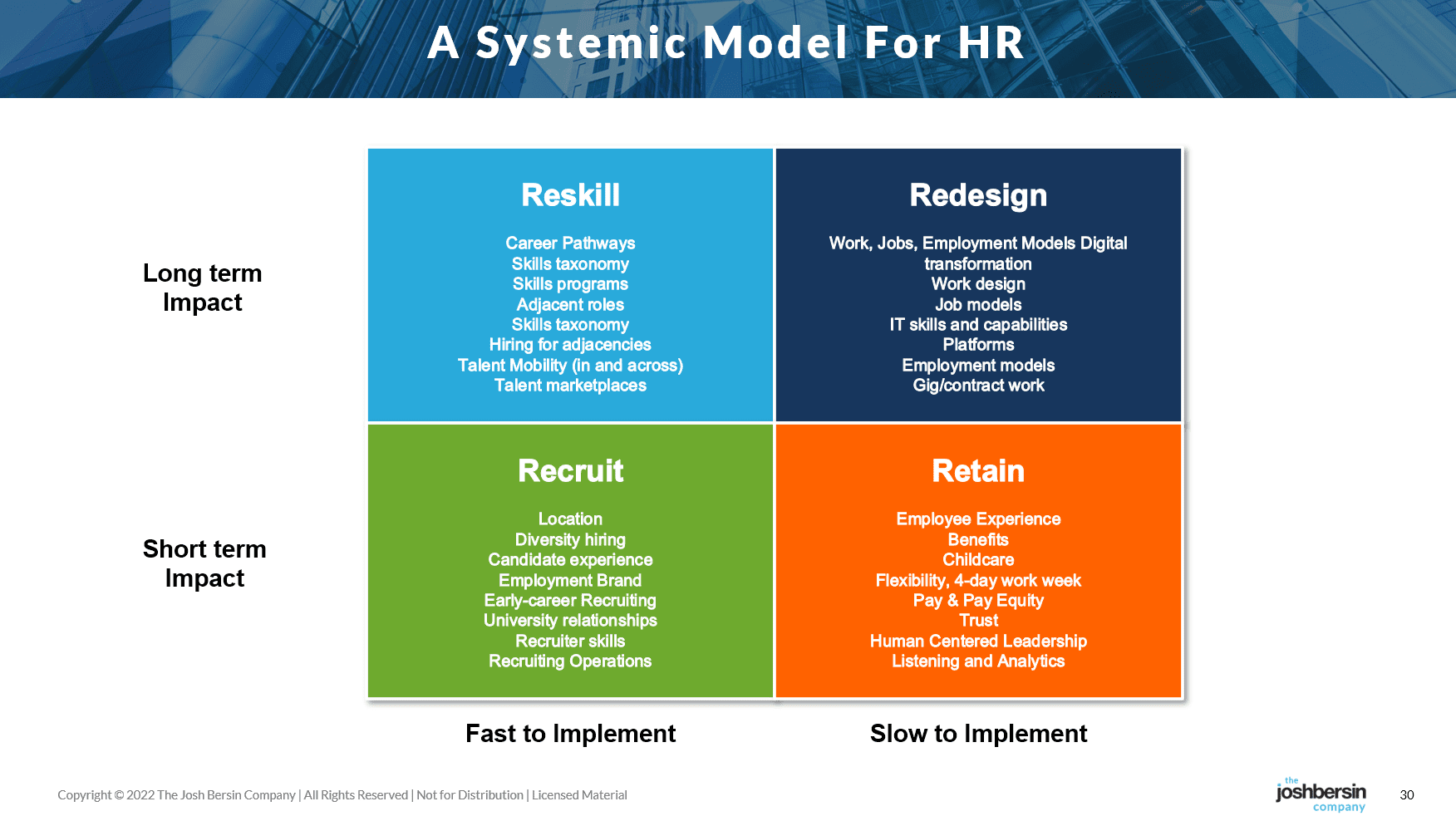The Confusing Job Market: CEOs and CHROs Seem Baffled
We have entered one of the most confusing job markets in decades. While the unemployment rate continues to drop (3.5% here, 2.4% in Japan), companies are also worried about the slowdown. So they’re “hiring” and “laying off” simultaneously. What a confusing time.
Consider the following data, taken from a recent PWC pulse survey among 700 business leaders.
 |
While almost half of these companies are slowing down their hiring, nearly two thirds are trying to improve retention, increase flexibility, and encourage people to go back.
What is going on?
Well, there are two big things.
First, the job market is in crisis. 81% of workers are burned out, people are taking a vacation, and employees just want a break. (Someone even proposed “Quiet Quitting” as a solution, which is not something I recommend to anyone.) The pandemic exhaustion has hit everyone, yet work hours keep going up as demand for products and services stays high.
This demand for workers (528,000 jobs were created last month) is counter-balanced by this never-ending news cycle about a “recession.” Well while the GDP has slowed and the fed has increased interest rates, the real demand for products and services has not slowed. (I was in Hawaii on vacation last week and everything we purchased was 30-50% more expensive than two years ago.)
In fact, I think we’ve done a pretty good job of “talking ourselves into a recession,” which I attribute to reporters and news media looking for things to talk about. (Plus the Republicans are looking for ways to criticize the Biden Administration). Is there a recession? No not really. (Read my piece on this topic.)
Yes, the Fed will continue to increase rates and while inflation has slowed, this cycle is not over. We are in a secular downcycle after 14 years of boom so we all have to accept that growth rates will slow and demand will shift. But that’s not to mean the economy is grinding to a halt. Quite the opposite.
And this leads me to the second point. Every industry is transforming into something else. And this shift, which we call The Big Reset, is creating demand for jobs, people, and new business models. So demand, while shifting, is not going away.
As our Global Workforce Intelligence research points out, more and more industries are being redefined. Retailers are becoming healthcare companies (Amazon Care will become bigger than Amazon Prime, as the company just acquired OneMedical and announced partnerships with Ginger and others). Auto companies are becoming electric manufacturers (Ford’s layoff is more of an engineering transition from internal combustion technology to electronic technology). Chemical and Oil companies are moving into Hydrogen and Batteries. And healthcare companies are struggling to become more efficient.
 |
(We will be launching our new GWI research on September 14 in Vegas, if you’re interested. Watch for the news.)
These evolved industries: healthcare, electric vehicles, low carbon energy, semiconductors – are each in a boom cycle. So while consumer incomes and savings may be hit by the higher interest rates, demand has not really slowed. And this, as confusing as it is, puts CEOs and CHROs in a confusing place.
This is not a recession: the workforce is transforming at a rate we’ve never seen before.
What Should CEOs and CHROs Do?
What to do? You have to accept that this is not a traditional “demand-driven” downcycle. This is a rapid change in demand, accelerated by the pandemic and fifteen years of digital disruption. So rather than just “lay people off” (of course some tech companies did vastly overhire), you need to “redeploy” your people into these new industry roles.
Topics like reskilling, career mobility, talent marketplace, and organizational agility are now all C-level topics. And they aren’t just ways to “retrain workers” – they’re needed transformation tools to stay relevant.
It’s interesting that the PWC survey showed that 63% of companies want to “change processes to address the labor shortage.” This is the redesign I’m talking about.
We define this as a new “systemic approach” to HR, where you look at Recruit, Reskill, Retain, and Redesign all at once.
 |
In many ways this is a healthy thing. Companies that figure this out quickly can climb the new growth curve as their markets and industries change.
Yes, it is a confusing time. We’re “downsizing” and “upsizing” simultaneously. But the key is not to do this in a draconian way. Make sure you make your company Irresistible, and you’ll flourish during this economic cycle.
 Join us at the HR Technology Conference on September 14 to learn more, I look forward to sharing our new GWI research soon.
Join us at the HR Technology Conference on September 14 to learn more, I look forward to sharing our new GWI research soon.
PS I’ll be signing copies of my new book on this topic, you can pre-order it now.
Additional Resources
How Do You Build an Irresistible Company? Here’s how Starbucks, Walmart, Microsoft, Lego Group, L’Oreal, Chevron, and Cedars Sinai thrive.
How Work Design And Job Design Are Holding Companies Back
Unleashing Human Potential: The Real Secret To Business Success


